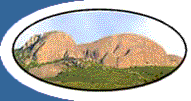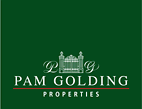Whatzup on Paarl Mountain?
2005-05-19
A NUMBER of new projects are currently being initiated on Paarl Mountain.
These include the expansion of the Paarl Mountain Nature Reserve (PMNR) Herbarium, the introduction of a community alien-clearing programme and the implementation of guided walks on the mountain.
Paarl Mountain is a natural gem right on our doorstep. It is extensively used by the community for recreation, research, resource harvesting, aesthetic pleasure and as a cultural heritage site.
The Paarl Mountain Nature Reserve (PMNR) hosts two very special and rare vegetation types: a form of fynbos that grows on granitic clay and renosterveld.
The reserve is managed by the Drakenstein Municipality and the
Paarl Mountain Advisory Committee, consisting of members of the municipal management team, botanical experts and representatives from Western Cape Nature Conservation and local interest groups.
Paarl Mountain’s most urgent need at present is for invasive alien plant species to be eradicated.
The first European settlers in the Cape deliberately introduced alien plants because they needed fresh produce, fuel, shelter and to feel more at home by surrounding themselves with familiar plants.
Many thousands of species were introduced, among them the income-generating plants such as wheat, barley, grape vines, deciduous fruit trees and pines, but only a few spread and became troublesome weeds.
These were mostly trees and shrubs from areas that also had recurring fires, summer drought and nutrient-poor soils like the Cape.
These species are equipped to survive in the fynbos and they even perform better than indigenous species because they arrived at the Cape without the predators and pests that control their population sizes in their natural habitats.
In the absence of natural enemies, populations of the aliens could grow exponentially.
As a result, aliens have much larger seed stores and better seedling establishment than fynbos species and are thus better equipped to expand their populations after each fire.
Among the aliens on Paarl Mountain our pine trees, dating from 1910, when they were called “Unieplante”, to celebrate South Africa becoming a union.
School children went up Paarl Mountain to plant masses of these “Unieplante” for the celebrations, not knowing what a problem they would cause for future generations.
Alien invaders threaten indigenous plants and also accelerate riverbank erosion, change fire regimes and reduce the flow of water in fynbos streams.
Fire-fighting is more expensive and much more dangerous in alien thickets and pine forests than in fynbos because the former is less accessible and has much higher fuel loads.
Certain aliens cause fynbos soils to be water-repellent, and deplete fynbos, resulting in soil erosion.
The most important problem of alien plants is the effect that they have on the water yield from mountain catchments, springs and marshlands.
Dense stands of invaders can reduce the water yield by as much as 100 per cent in extreme cases.
This is serious in the drought-stricken environment of the fynbos lowlands.
A combination of alien control and fire management ensures that after a burn, systematic follow-up action is taken to remove seedlings and apply herbicide to the resprouters.
The main methods of control are cut-and-leave, cut-and-burn, burn standing and chemical control.
The most effective control of invasive pines and hakeas, none of which sprout after fire, is the cut-and-burn method. After cutting down, new seedlings emerge and are then killed by fire.
The second early morning mountain walk will take place on Saturday 21 May, starting at the main picnic site in Jan Phillips Drive at 07:00.
That afternoon at 16:00 there will be a botanical ramble starting at the same place.
For more information, contact Gael Campbell-Young on 872-8672 or 084-793-2876.
More
News
|


